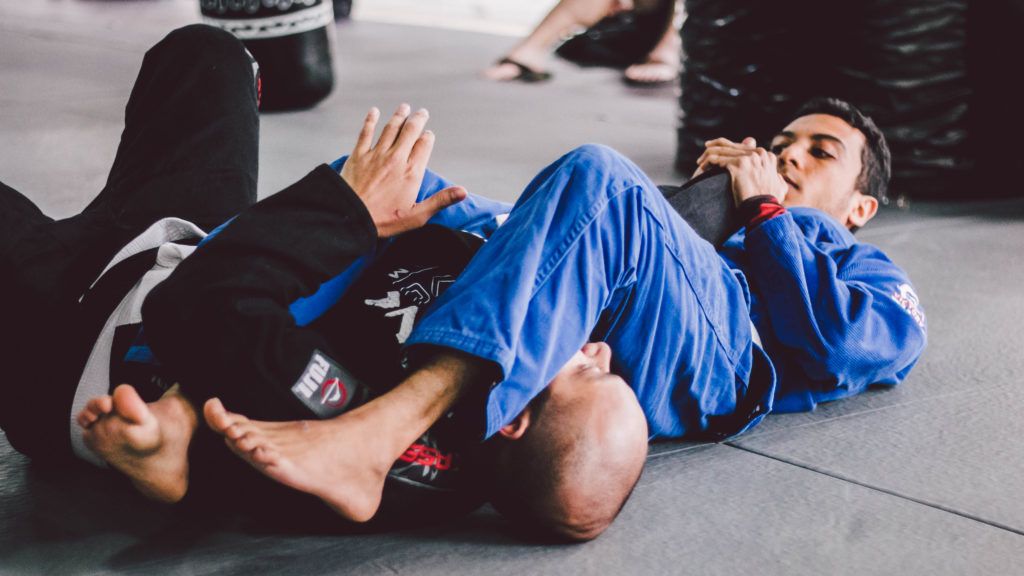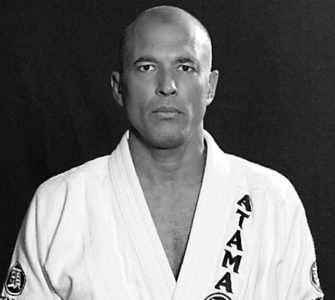Guest post by Evolve MMA, Asia’s premier championship brand for martial arts. It has the most number of World Champions on the planet. Named as the #1 ranked martial arts organization in Asia by CNN, Yahoo! Sports, FOX Sports, Evolve MMA is the top rated BJJ gym in Singapore.
Whether you are wearing a brand-new white belt or yours has become a little dirty after months (or years) of training, these tips will help accelerate your learning and advance rapidly through the ranks.
Today, Evolve Daily shares Ten Essential Tips For Brazilian Jiu-Jitsu White Belts.
1) Don’t be afraid to make mistakes
You’ve heard it before, and it applies to Brazilian Jiu-Jitsu; don’t be afraid to make mistakes.
No matter the significance of the mistake, errors provide an opportunity to learn and improve.
But notice, mistakes provide only an ‘opportunity’ to learn. The actual improvement and benefit of making a mistake begins with recognition of the error and then learning how to not make the same mistake again.
Note what you might have done incorrectly, learn from it and start again.
2) Compare yourself to yourself, not others
It can always be difficult to determine personal progress.
However, there are ways to improve your self-awareness, and it all begins with comparing yourself with yourself. It sounds a little wacky, but by analyzing whether you might defeat yourself a month ago, or maybe even three months ago, you can give yourself confidence you are naturally improving and developing your abilities.
The trap that so many people fall for is instead comparing themselves to the surrounding others.
By doing this, you won’t feel a sense of improvement; because like you, these people are also improving. It is likely that everyone inside your gym is improving at a similar rate and it might be difficult to ‘catch’ those higher belts.
Compare yourself to yourself and not others.
3) Train consistently
As obvious as it may seem, training consistently is important.
It will not be possible for everyone to attend every training session. However, it is important that you maintain a consistent approach to training.
This way, it ensures you keep up with the recent developments inside class. If an instructor has been teaching a particular move, technique, or position for a week (or longer) and you attend class toward the end of this schedule, it will be difficult to put all the ideas together inside your mind.
However, if you consistently attend training, you will find that techniques stick with you much easier. Practice is great, but repetition is when you notice massive improvements in your game.
4) Roll more often
Rolling (sparring) is where all of your learning comes together to solidify in your mind.
While you can learn the essential techniques, positions, and submissions from your instructor, there are things you learn while rolling that no one can teach you.
Firstly, you will make drastic improvements to your overall game once you start rolling consistently. You will understand which areas of your game are the strongest, and which are the weakest. Using this information, you can then better prepare yourself for the actual training and technique sessions with your instructor and enter these sessions with a greater understanding of how all of these moves apply.
It helps to see the finish line before you begin, and this helps you achieve that.
5) Have a clear purpose when rolling
Drill with intent.
But always remember, it is important to enter your rolling sessions with a clear purpose.
Mindlessly stepping onto the mats and rolling for five five-minute rounds with different partners will definitely challenge you and help develop your cardio system for BJJ, but you won’t be learning as much as you could if you have a clear aim in mind
You can use this opportunity to implement some of the techniques that you learned in training. Alternatively, you can practice defending a certain submission you seem to struggle with. Or you can simply aim to not have your guard passed in a particular way or focus on a certain transition of your own.
Use these rounds to practice, practice, practice!
6) Stop being tense while rolling, be relaxed instead
It’s natural to be a little nervous, anxious, and tense when rolling at first.
Rolling for the first time is your first-ever opportunity to put the things you have learned in practice into action. But even then, through the first months of rolling, your knowledge and understanding of positions in BJJ will be extremely limited.
Accept that you don’t (and can’t) know everything and just go with the flow.
This is your opportunity to try things, take risks, and make mistakes.
Relax your body and stay comfortable so you can have multiple rolls and speed up your learning rather than going all-out in one round and sitting out for the rest of the session.
7) Think about learning, not about the result
This soon becomes embedded in the minds of all who practice BJJ consistently.
It is important not to consider the actual result, but to reflect on the opportunity to learn.
If you are submitted by an opponent, don’t be ashamed or disappointed with the result. Instead, think about what happened and how you can stop this from occurring again.
This also applies to the situations that you submit somebody in the gym as well. If you submit an opponent, look at this from a different perspective and consider what worked. If your submission was set-up from a certain position, look for more ways to get to that position.
Always be learning.
8) Ask more questions
Have you ever been in class and not understood a particular technique or submission? If so, speak up!
Your instructor is there to help you. Believe it or not, they want you to ask as many questions as possible.
By asking questions (even difficult ones), you are training your mind to learn and understand new concepts.
If you are unsure about something and don’t clarify it, you have learned nothing and will have missed out on a prime opportunity to expand your knowledge.
9) Don’t refuse to tap
There is no reason not to submit to an opponent.
Again, don’t think about the result in this situation, but consider the learning that comes with this experience.
If your opponent has locked in a tight armbar and there is no escape available, it is best to tap. In most cases, an experienced opponent will not apply the submission with maximum force and will instead just allow you to tap. In this situation, it is important to tap.
10) But, tapping too early can be bad as well
In contrast to the point above, tapping too early has its disadvantages as well.
If an opponent has your back, you should focus on ways to escape this position and gain a dominant position of your own. If they reach for your shoulder and clamp down on it ready to apply a choke, don’t tap just yet because there still might be a way for you to escape. Even once your opponent has wrapped your neck and applies the choke, fight their hands and arms to see if you can create some breathing space. If not, go ahead and tap; it isn’t a problem!
It is important to learn how to avoid certain submissions and sometimes the best opportunity to escape is the final seconds before it is applied.
If you plan to enter competition one day, these moments of desperation could be the difference between you winning a medal or not.


















